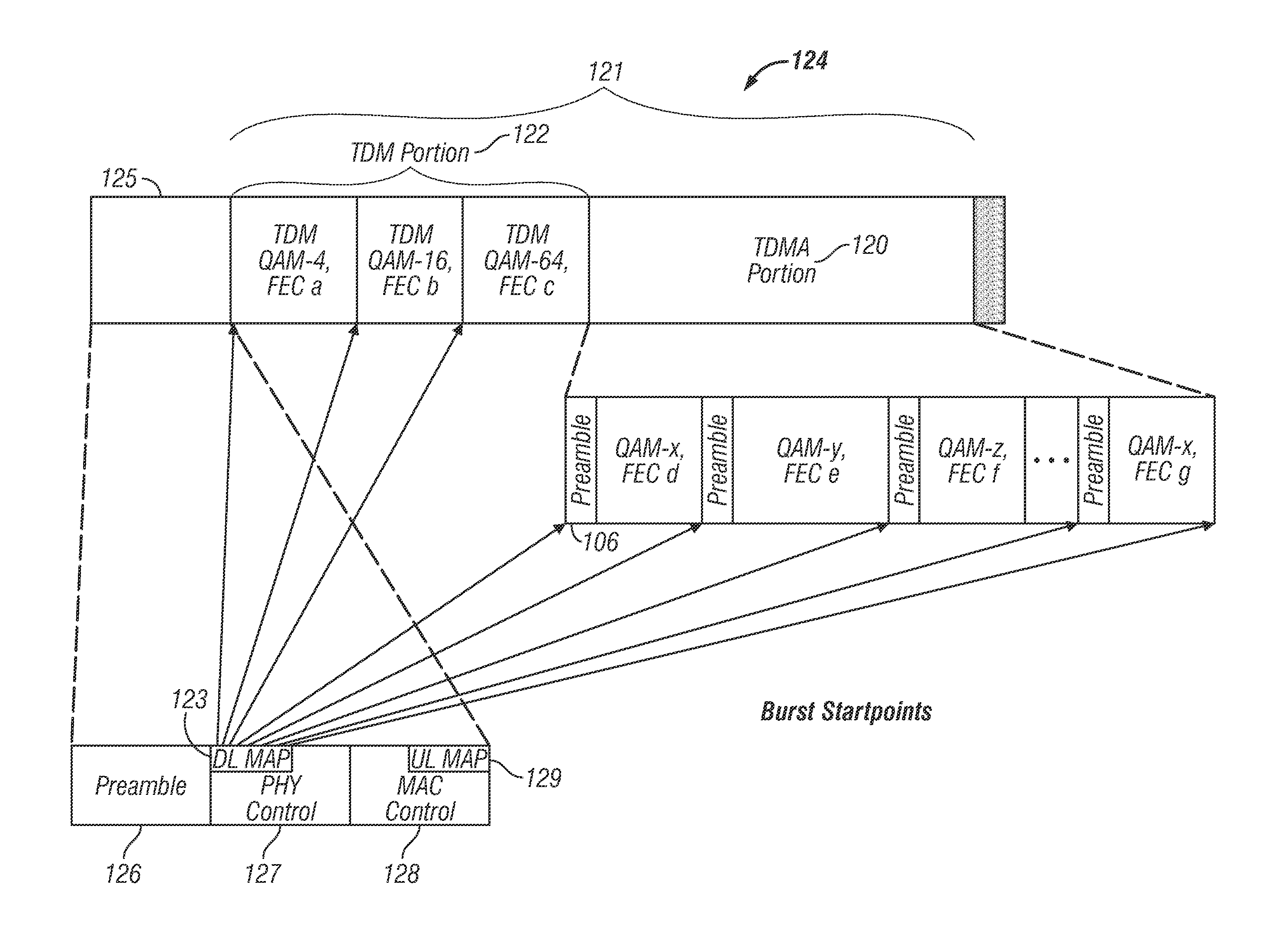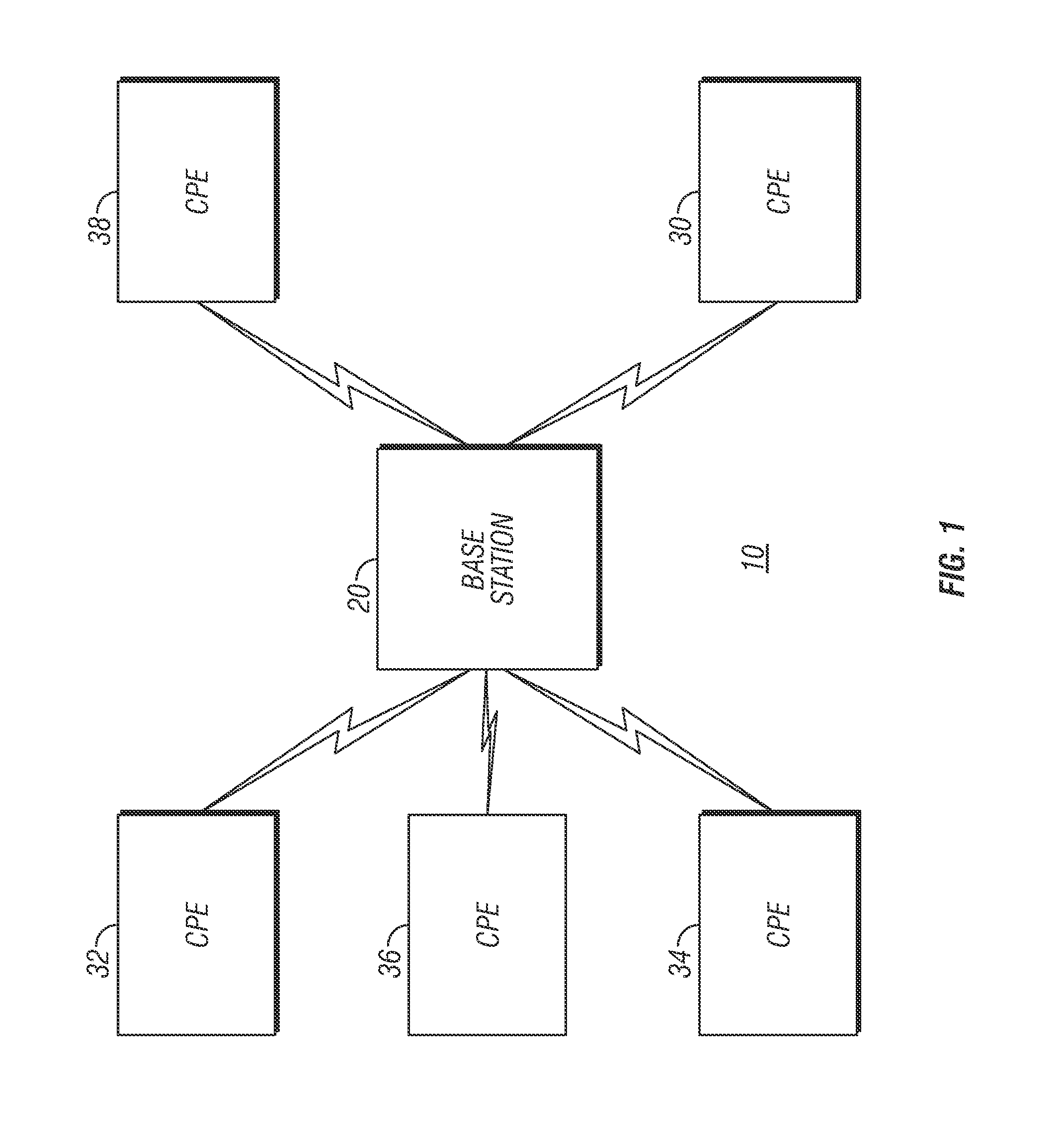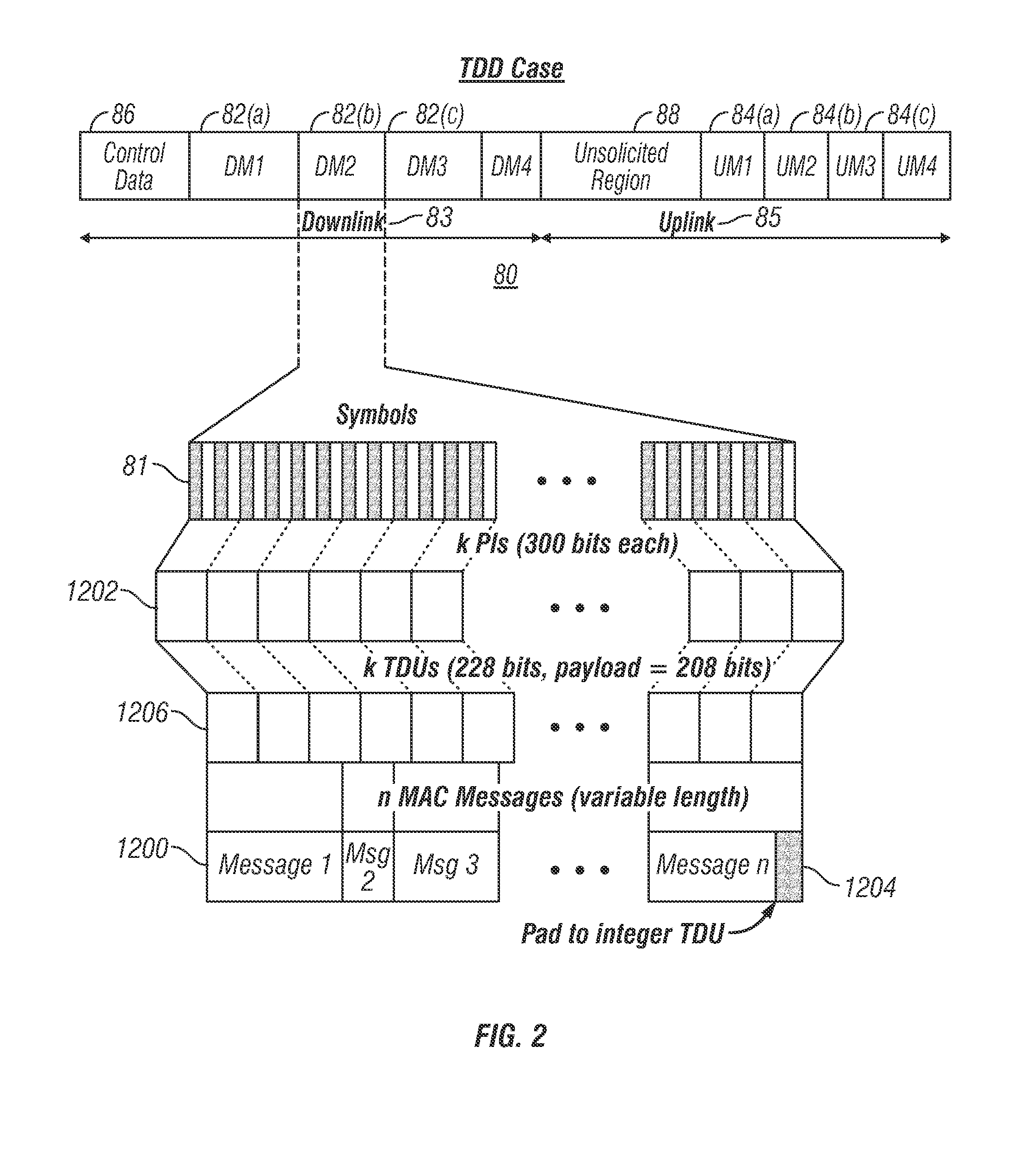Framing for an adaptive modulation communication system
a communication system and frame structure technology, applied in multiplex communication, channel coding adaptation, synchronisation arrangement, etc., can solve the problems of falling out of synchronization with the base station, increasing the cost and complexity of deploying a fdd communication system, and outweighing the obvious advantage of a tdd communication system
- Summary
- Abstract
- Description
- Claims
- Application Information
AI Technical Summary
Benefits of technology
Problems solved by technology
Method used
Image
Examples
Embodiment Construction
” one will understand how the features of the system and methods provide several advantages over traditional framing techniques.
[0012]One aspect is a frequency division duplexing (FDD) wireless communication method for use by a base station, at least one full-duplex terminal, and at least one half-duplex terminal, wherein the base station transmits using a downlink subframe on a first channel and the full-duplex and half-duplex terminals transmit using an uplink subframe on a second channel, wherein the downlink subframe includes a broadcast preamble, a time division multiplex (TDM) portion, and a Time Division Multiple Access (TDMA) portion, and wherein the TDMA portion includes at least one modulation / forward error correction (PHY) mode with an associated preamble, both of which are intended for the at least one half-duplex terminal. The method comprises transmitting a broadcast preamble from a base station to a full-duplex terminal and a half-duplex terminal during a downlink sub...
PUM
 Login to View More
Login to View More Abstract
Description
Claims
Application Information
 Login to View More
Login to View More - R&D
- Intellectual Property
- Life Sciences
- Materials
- Tech Scout
- Unparalleled Data Quality
- Higher Quality Content
- 60% Fewer Hallucinations
Browse by: Latest US Patents, China's latest patents, Technical Efficacy Thesaurus, Application Domain, Technology Topic, Popular Technical Reports.
© 2025 PatSnap. All rights reserved.Legal|Privacy policy|Modern Slavery Act Transparency Statement|Sitemap|About US| Contact US: help@patsnap.com



